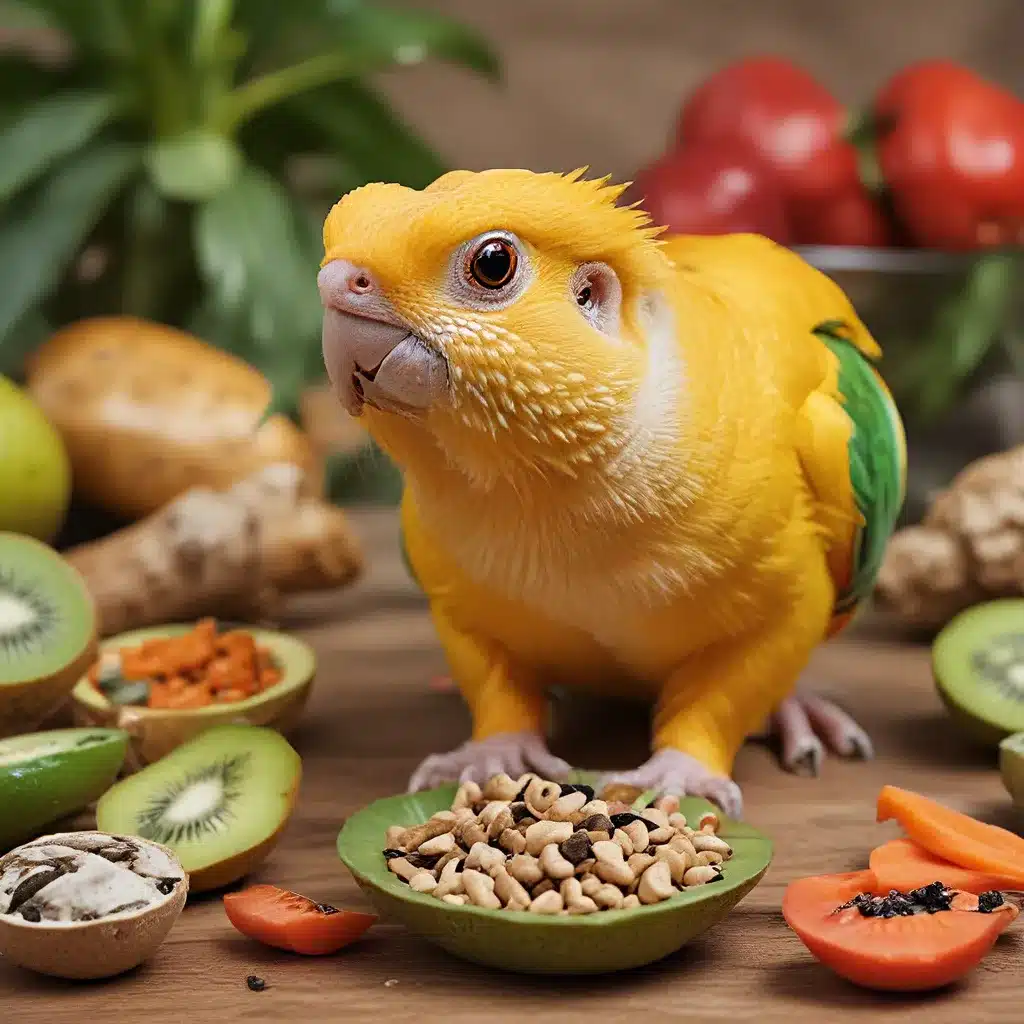
As a proud owner of an exotic pet, I know all too well the challenges of ensuring their dietary needs are met. From feisty feathered friends to scaly slithering companions, each species requires a delicate balancing act to keep them happy, healthy, and thriving. But fear not, my fellow exotic enthusiasts, for I’m here to guide you through the intricacies of exotic pet nutrition, one bite-sized morsel at a time.
Deciphering Dietary Distinctions
Let’s start by acknowledging the stark differences between our beloved exotic pets and their more conventional canine and feline counterparts. Unlike the relatively straightforward needs of our canine and feline companions, exotic pets encompass a diverse range of species, each with their own unique dietary preferences and nutritional requirements.
Take birds, for instance. These feathered friends are primarily seed-eaters, but they also require a carefully curated mix of fruits, vegetables, and proteins to truly thrive. Reptiles, on the other hand, have an even more specialized palate, with some preferring a diet rich in insects, while others may gravitate towards leafy greens and the occasional fruit. Truly, understanding these nuanced distinctions is the first step towards ensuring our exotic pets receive the nourishment they need to live their best lives.
The Delicate Dance of Macronutrients
But it’s not just about what we feed our exotic pets; it’s also about striking the right balance. You see, just like us humans, our exotic companions require a harmonious blend of macronutrients – carbohydrates, proteins, and fats – to maintain optimal health. The proportions of these essential building blocks, however, can vary drastically depending on the species.
For example, insect-eating reptiles like bearded dragons require high-protein diets, while herbivorous species may thrive on a more fiber-rich regimen. Monitoring these proportions and adjusting accordingly is crucial to ensuring your exotic pet’s nutritional needs are met.
Supplementing for Optimal Wellbeing
But the dietary dance doesn’t end there, my friends. In addition to their primary sustenance, many exotic pets may also require targeted supplementation to ensure they’re getting all the essential vitamins, minerals, and nutrients they need to truly shine.
Calcium, vitamin D3, and a host of other micronutrients may need to be added to your pet’s diet, especially for species with unique requirements or those confined to indoor habitats. And let’s not forget the importance of enrichment through foraging activities, puzzle feeders, and a varied menu – these elements can not only satisfy their natural instincts but also promote overall well-being.
Avoiding the Pitfalls of Perilous Provisions
Now, as we delve into the world of exotic pet nutrition, it’s crucial to remember that not all edibles are created equal. In fact, some common human foods can be downright deadly for our scaly, feathered, or furry friends. Chocolate, caffeine, and even avocado can pose serious threats to the health and safety of our exotic companions.
It’s essential to research and steer clear of any potentially harmful foods, as well as be wary of pesticides or herbicides that may linger on fruits and vegetables intended for human consumption. After all, the last thing we want is for our beloved pets to fall victim to a culinary catastrophe.
Consulting the Experts
As you navigate the intricate landscape of exotic pet nutrition, I can’t stress enough the importance of seeking guidance from the true authorities – the veterinarians and specialists who dedicate their careers to ensuring the wellbeing of our feathered, scaled, and furry friends.
Whether it’s crafting a personalized diet plan, addressing specific nutritional concerns, or simply seeking advice on how to best support your pet’s unique needs, these experts are an invaluable resource. After all, when it comes to the health and happiness of our exotic companions, we can never be too cautious or too well-informed.
Putting it All Together
So, there you have it, my fellow exotic enthusiasts – a comprehensive guide to the world of exotic pet nutrition. From understanding the dietary distinctions between species to mastering the delicate dance of macronutrients, we’ve covered a lot of ground. But the journey doesn’t end here.
Remember, each exotic pet is unique, and their nutritional requirements may evolve over time. Stay vigilant, stay curious, and don’t be afraid to seek the guidance of those who know best. With a little bit of effort and a whole lot of love, you can ensure your exotic pet thrives, both inside and out.

